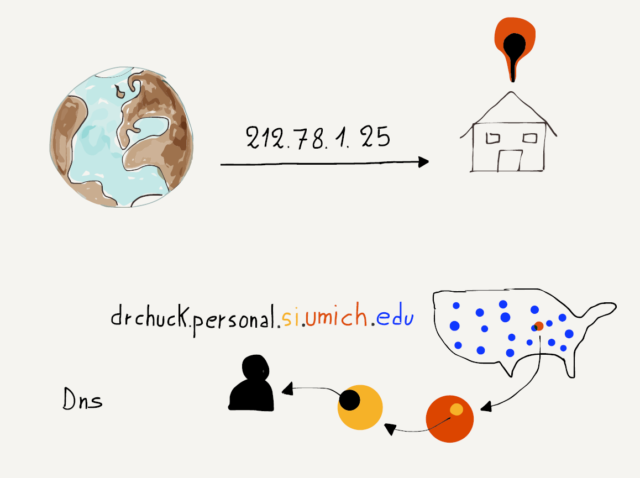If you recall from the previous section, IP addresses are allocated based on where you connect a new network to the Internet. Domain names are allocated based on organizations that “own” the domain name. At the top of the domain name hierarchy is an organization called the International Corporation for Assigned Network Names and Numbers(ICANN). ICANN chooses the top-level domains (TLDs) like .com, .edu, and .org and assigns those to other organizations to manage. Recently a new set of TLDs like .club and .help have been made available.
ICANN also assigns two-letter country code top-level domain names like .us, .za, .nl, and .jp to countries around the world We call these Country-Code Top-Level Domain Names (ccTLDs).
Countries often add second-level TLDs, like .co.uk for commercial organizations within the UK. Policies for applying for domain names with any particular ccTLD vary widely from one country to another.

Once a domain name is assigned to an organization, the controlling organization is allowed to assign subdomains within the domain. As an example, the .edu top-level domain is assigned to the Educause organization. Educause assigns domains like umich.edu to higher education institutions. Once the University of Michigan is given control of umich.edu, it can make its own choices for subdomains within its new domain. Domains ending in .com and .org can be purchased by individuals. The individual owners of those domains are allowed to manage their domain and create subdomains under it for their own use or use by others.